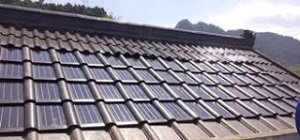From Guest Blogger Diana Smith: Four Tips for Building a Green Home

Location matters
You’ve probably already heard the term “location, location, location” and although those three words are considered somewhat of a mantra for real estate agents, location does play a significant role when it comes to creating a green home. First and foremost, location often times dictates the size and orientation of the house, which is important for those looking to incorporate a solar approach for generating electricity.
Not to mention that building an unnecessarily large house means that you would be wasting space that needs to be heated or cooled, depending on the season. On the other hand, building a house that is too small could cause issues further down the line when you feel ready to welcome a new member into the family. Before undergoing any major builds and upgrades take all the details into consideration and if you’re unsure of whether the decision you’re making is the right one, talk it out with the architect and voice any concerns you might have while the house is still just a sketch on a piece of paper.
Invest in proper insulation
Cooling and heating account for around 50% of your entire energy consumption. This is why proper insulation plays such an important role when it comes to constructing an environmentally friendly house. Air tends to leak through when a house doesn’t have an adequate insulation, particularly around doors and windows, which is what most green homeowners tend to forget and focus solely on the insulation between the walls. Proper insulation encompasses the entire house and significantly reduces the overall energy consumption, as well as your energy bill.
Go solar
As we already mentioned, one of the most important aspects of going solar is to have your house properly positioned with regards to the sun. This allows you to maximize the efficiency of your solar panels and use them to their full potential. An adequately placed set of solar panels is guaranteed to generate enough electricity for the average household and if you’re really efficient with your energy consumption, you might even generate more than you can use and sell it back to the grid. This is an excellent way of generating revenue while still remaining eco-friendly.
Recycled, repurposed and reused
When it comes to equipping your green home with appliances and furniture, using recycled materials is one of the best ways of not only remaining green but also saving up a lot of money you would normally waste by purchasing brand new items. You can use repurposed wood as a base for a new countertop or floorboards, while recycled materials, such as aluminum, glass, and tiles can be used to build the entire house from the ground up. Of course, building a house is bound to leave you with some rubbish and most homeowners tend to forget that it too can be recycled. This is why we highly recommend hiring a professional construction debris removal company that handles rubbish in an environmentally-friendly manner.
Building a green home from scratch might require a little bit more work and resources in the initial stages, however, this environmentally conscious effort pays off in the long run. Whether it’s using recycled materials, being aware of your energy expenditure and ways of reducing it, as well as going completely solar in order to decrease the overall carbon footprint associated with generating energy, there are numerous ways you can help raise awareness and hopefully, influence the future generations to become more aware of their surroundings and the large impact we have on our environment.

One of the items omitted is zoned heating and cooling. That is especially important if there are rooms which are seldom used since not heating or cooling them can save significant energy. For zoning to be as effective as possible, it is helpful to insulate individual rooms.
Efficiency can require compromises. For example, if there is a good view available, one may want one or more rooms to be well fenestrated but, even with the most efficient windows available, windows reduce energy efficiency. Also, all houses are eventually resold so when a house is in the design phase, one must consider resale value. If fenestration is reduced to the minimum, resale value will be reduced.
Consider the number of stories. A two story house can be more energy efficient than a one story house.